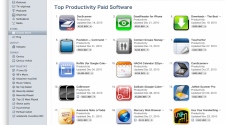Applying for a job can be stressful. Each listing comes with different requirements, and sometimes it can be hard to keep them straight. Even though most companies want to see your resume, some may ask for a CV.
A CV isn’t something everyone always has written up. And you might think that a resume should cover all the important aspects of your qualifications to be hired. But there is a difference between a CV and a resume.
Read on for deeper insight.
What Is a CV?
CV stands for Curriculum Vitae. Translated from Latin, this means “course of life”. The point of a CV is to emphasize academic accomplishments. It’s used to apply to positions in academia, fellowships, or grants.
It is a document laid out over two or more pages that goes in-depth about your achievements, like publications, awards, and honors. A CV also covers your education.
Professional references, coursework in school, any fieldwork completed, or research projects or dissertations you worked on are also in a CV.
Unlike a resume, you can include your hobbies and interests in a personal profile to highlight your skills and positive attributes. Here are some curriculum vitae ideas that will make you stand out from the crowd.
CVs are organized chronologically to give an overview of your career. Traditional, CV starts with your educational experience before moving into your career.
Think of a CV as a full record of your career history. It is a static document that doesn’t change based on what you’re applying to.
What Is a Resume?
A resume summarizes career history, skills, and education. On one page, you should highlight your experience, key skills, and job-related qualification.
Resumes are used when you’re applying to a position in an industry, non-profit, or public sector company.
Unlike CVs, resumes should be as concise as possible. It’s recommended that they stay on one page, but can be as long as two pages. But going over two pages is not recommended because the reader will not spend that much time look at the document.
There are three types of resumes: chronological, functional, and combination. It’s important to use the format that’s best for the job you’re applying to.
The goal of a resume is to stand out from other applicants. So you want to make a good first impression by having the most pertinent information at the forefront.
This often means changing the resume based on the job you’re applying to and tailoring the information to the needs of the job post.
What’s the Difference Between a CV and a Resume? Overview
As an overview, there’s a difference between a CV and a resume, in terms of length, purpose, and layout.
Length: CVs are long, stretching out over two pages with detailed descriptions of your experience in academia and your career. A resume is a summary, ideally no more than a page, of your skills and experience.
Purpose: A CV is used to apply to positions in academia as well as fellowships and grants. A resume is preferred when applying to jobs in an industry, non-profit, or public sector.
Layout: CVs are chronological, starting with education and moving into a career. A resume can be chronological but can also have the information shifted around to best suit the needs of the job listing.
Keep reading our blog for more career tips and insights.















